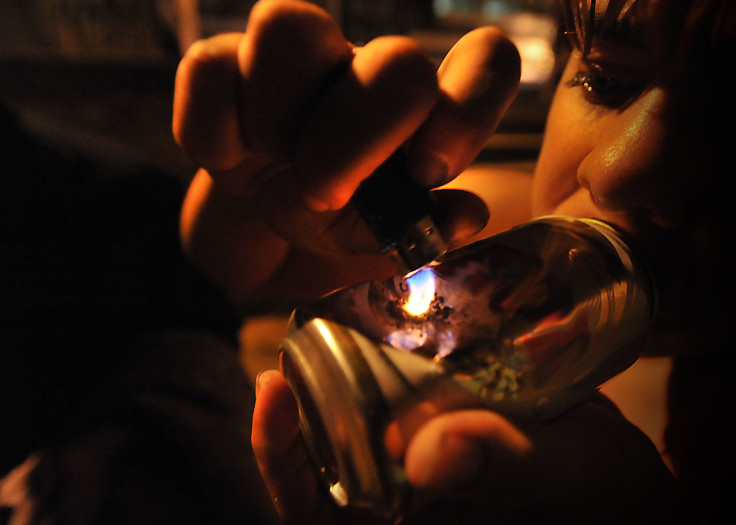Time To Retire The Phrase "Crack Baby;" New Study Says 1990s Worry Was Overstated

The fallout from the crack cocaine epidemic that plagued American cities in the 1980s is, luckily, not as bad as expected, according to a new study published Monday online in Pediatrics.
Due to a number of social, political, and geographical factors, in the 1980s the price of crack cocaine — a solid, smokeable form of cocaine — became cheap and readily available in cities of nearly every state in the country. In major cities such as New York, Los Angeles, and Detroit, crack became a major public health issue, particularly in low-income, minority neighborhoods.
For one thing, crack use was often accompanied by severe increases in violent crime. A 2000 study published in The Review of Economics and Statistics, for example, posited that crack contributed to a nationwide 10 percent increase in crime in the period between 1979 and 1991. African American communities were hit the hardest. According to the Bureau of Justice Statistics, homicide victimization rates among black men and women were dropping in the early 80s, but then sharply increased in the late 80s and early 90s, returning to their 1985 numbers only in 1995. Since then, the rates have maintained a downward trajectory. In the same period, homicide rates among white men and women stayed the same.
In addition to the violent crime, at the time many public health officials worried that crack use would have reverberations for the next generation. There was a widespread fear that "prenatal cocaine exposure" would cause the children of crack-addicted mothers to be born into a life of physical and mental incapacities. Some babies were being born essentially addicted to crack out of the womb, with symptoms like jitteriness and smaller-than-normal heads; studies at the time suggested irreversible brain damage. According to the New York Times, newspapers at the time were running stories with headlines like "Cocaine: A Vicious Assault on a Child," "Crack's Toll Among Babies: A Joyless View" and "Studies: Future Bleak for Crack Babies."
But now, years later, as the so-called "crack babies" are entering their late 20s and early 30s, it seems as though the scare may have been overstated. This latest study, led by University of Maryland researcher Maureen Black is one of a series of recent studies looking back on an "epidemic" that may have been more media scare than health threat.
Black's team underwent a comprehensice review of a wide range of 27 studies concludes that children born of mothers who were using crack cocaine during pregnancy grew up to be have relative normal mental and physical functions. The 27 studies involved over 5,000 teenagers from low-income families in major urban areas. The study sought to compare outcomes in four categories in these former "crack babies:"
- Behavior
- Cognition/school performance
- Brain structure/function
- Physiological responses
The results? Yes, there are some differences between babies who had prenatal cocaine exposure (PCE) and those who did not. However, the differences are minimal, and could potentially be explained by other mitigating factors, such as economic status and access to opportunities - "the caregiving environment and violence exposure pose additional threats," the study says. "Future research should investigate mechanisms linking PCE with adolescent functioning."
This study further widens the trail blazed by the Maternal Life Study, a large-scale longitudinal study that attempted to understand the long-term effects of PCE. That study concluded "it is now well documented that scientific reports in the 1980s were exaggerated and incorrect in their portrayal of children exposed to cocaine in utero as irreparably damaged."
Some worried that babies with PCE would grow up more likely to be crack users, but no evidence to support this theory has surfaced. And in fact, experts have found that exposure to alcohol and tobacco use while in the womb actually has more significant long-term detrimental health effects than PCE. Of course, no one is recommending crack use for pregnant women. But the fact that the media and public was so up in arms about the issue does point to a separate health issue entirely: the moralizing of public health.
According to the New York Times, women who use cocaine or crack during pregnancy often lose custody of their children, and that many during the crack epidemic were prosecuted and jailed for their crack use — the implication being that women who drink and smoke cigarettes during pregnancy would never be prosecuted in this way. And this type of moralizing can lead to misuse of public resources, efforts, and energies.
Instead of looking at the real likely culprits behind the damage done to these children's intellectual and emotional development — the exposure to violence, the lack of social support, inadequate health care, unstable family situations, substandard schools — we spent our time in the 90s worrying over a nonproblem.
Black's study will, hopefully, further efforts to understand "the consequences of prenatal cocaine exposure and its relationship with risky environments provides a crucial framework for making treatment decisions and informing overall public policy," as the Maternal Lifestyle Study put it.
Source: S. Buckingham-Howes, S. Shafer Berger, L. Scalletti, M. Black. Systematic Review of Prenatal Cocaine Exposure and Adolescent Development. Pediatrics. doi: 10.1542/peds.2012-0945. 2013.
Published by Medicaldaily.com



























